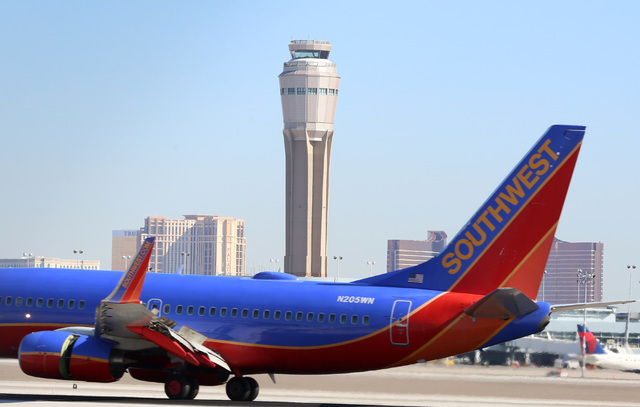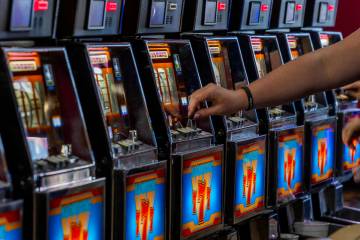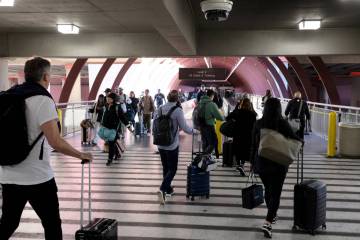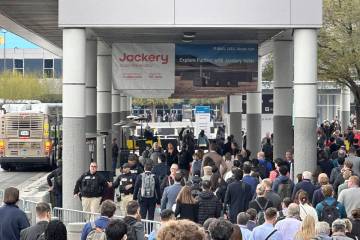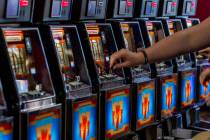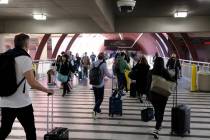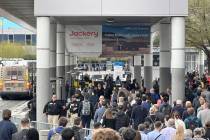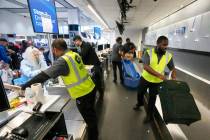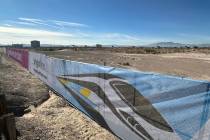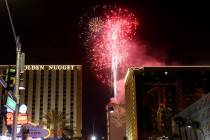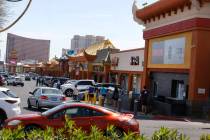Southwest’s system failure a blow to Las Vegas tourism
Earlier this month, the traveling public saw again that it doesn’t take an act of terrorism to create havoc on a city’s tourism economy.
It can be something as simple as a bad router.
I had the misfortune of living the Southwest Airlines system meltdown that began July 20 and wasn’t resolved for five days.
Southwest’s problem was a malfunctioning router, a piece of computer hardware that many of us have in our own homes to help establish a wireless network.
Southwest’s router went down and a redundant backup system failed, causing the entire network to crash.
The down system prevented passengers from checking in for flights and getting boarding passes.
Under Southwest’s check-in system, a boarding pass is available exactly 24 hours before flight time. Southwest operates on a first-come, first-served basis, so there’s a scramble as fliers check in online hoping to get an A or B boarding pass.
Southwest boards 30 people at a time, so getting A1 through A30 is great, getting A31 through A60 is good, getting B1 through B30 is all right and getting B31 through B60 means you may or may not have overhead bin space by the time you get on the plane.
Get a C boarding pass and you may be in for an uncomfortable journey. Southwest employees often joke that C stands for “center,” the middle seat between the window and the aisle, meaning you’ll probably be lodged between two people for four or five hours if you check in behind 120 other people.
Southwest has profited from the phenomenon by offering “early bird” seating for $15 upon ticket purchase that assures the ticket holder of an A boarding pass. If you forget to check in and get a C pass, you can buy an upgrade at the gate for $40. Hence, the rush to check in 24 hours before flight time — and the panic when the system fails.
The problem for any complex airline networking system is that once it goes down, there’s a cascading effect on aircraft and flight crews.
Fliers who checked in before the system crashed were fine and, in most cases, planes, pilots and flight attendants were where they were supposed to be at flight time.
But once the system crashed, Southwest had to ground everything and start over to get the network back to normal. That’s when it began canceling most of its flights. Over three days, the airline canceled more than 1,300 flights. Most of Southwest’s Boeing 737s carry 143 passengers, so around 186,000 passengers were affected, some multiple times.
It’s hard to say how much this technological snag cost Las Vegas in visitation and tourist spending. We’ll know more at the end of August when McCarran International Airport and the Las Vegas Convention and Visitors Authority post their July numbers.
It’s possible that people planning to come to Las Vegas waited out the cancellations and came anyway or found a different airline. But it’s also possible some would-be visitors just bagged it.
Because Las Vegas is Southwest’s third-busiest destination, with an average 223 departures a day to 59 destinations, our city was hit harder by the outage than most Southwest cities. McCarran, which calculates the number of flights differently than Southwest, figures the airline has 32,314 seats coming into the market every day.
Fortunately for Las Vegas, the technology outage occurred midweek and not when a major convention was in town.
But that’s little consolation to those who had to get here because it’s home. Like me.
I was scheduled for a Wednesday evening departure from Denver, another busy Southwest city, and entered an airport line at least 500 people long to check bags — and, as it turned out, to rebook flights.
The departure board listed all but one flight to Las Vegas canceled. The lone departure was scheduled to go out at 10:55 p.m. No problem, I thought, it’s only 7:30. I’ll try to get on that one. When I reached the front of the line at 11:15, I was told my best option was a 5:30 a.m. departure the next day. So I took it.
Just before leaving for the airport at 3:30 a.m. Thursday, I got a text message from Southwest that the rebooked flight was canceled. I called the airline.
Since thousands of other passengers were doing the same thing, I was on hold for close to two hours. Once a human picked up, I learned that my next option was a 6 a.m. Friday flight to Las Vegas via San Diego.
As luck would have it, I was able to work from Denver on Thursday and my story list included an earnings conference call with Southwest CEO Gary Kelly on the company’s second-quarter earnings.
On the call, I asked Kelly how much the technology outage would cost Southwest. It was still early in the crisis, so he really didn’t have a good estimate. But it has to be in seven figures because not only did Southwest have to put up stranded passengers overnight across the country, but the company, as a courtesy, offered vouchers for future travel. Add to that the overtime it paid to employees nationwide to solve the mess and it turns into a really expensive proposition. Southwest did all the right things public relations professionals learn in crisis communication: It apologized to customers for the inconvenience, stated publicly that it had failed and offered compensation to the people it had inconvenienced.
To some, that’s not enough; to others, it’ll preserve just enough customer loyalty.
As it turned out, my second rebooking via San Diego also was canceled.
After I finally got home Friday afternoon, I started thinking about how one bad tech glitch could smack a city’s tourism economy.
Contact Richard N. Velotta at rvelotta@reviewjournal.com or 702-477-3893. Follow @RickVelotta on Twitter.



